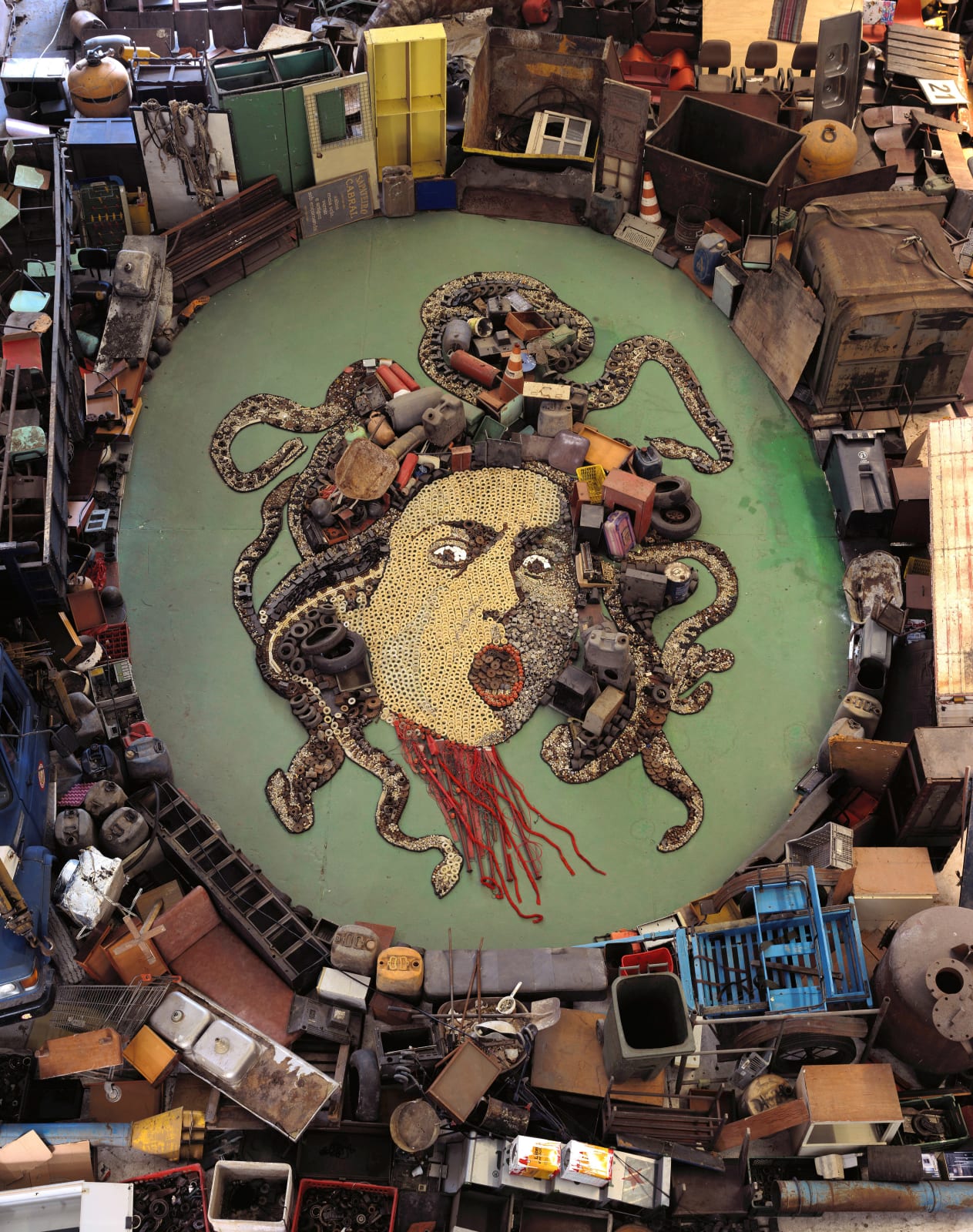
Vik Muniz Brazilian, 1961
Medusa, after Caravaggio (Pictures of Junk), 2009
Digital C-print
126 x 101.6 cm. (49 5/8 x 40 in.)
Edition of 6 + 4 AP (AP 3/4)
Copyright The Artist
In his striking Pictures of Junk series, Vik Muniz transforms discarded materials – old tyres, tangled chains, crushed cans, and obsolete machinery – into grand, mythological tableaux. Drawing inspiration from...
In his striking Pictures of Junk series, Vik Muniz transforms discarded materials – old tyres, tangled chains, crushed cans, and obsolete machinery – into grand, mythological tableaux. Drawing inspiration from classical artworks such as Cranach’s Apollo and Diana and Bouguereau’s Orestes Pursued by the Furies, Muniz reconstructs these iconic images using rubbish, exposing the tension between artistic idealisation and material decay.
By reimagining classical figures in the detritus of modern life, Muniz challenges the notion of beauty as something pristine or unattainable. His work critiques the way history has polished and simplified mythology, turning complex narratives into neat moral lessons. The gods and heroes of his compositions emerge from heaps of refuse, their forms meticulously arranged yet fundamentally hollow – symbols of grandeur built on waste.
Muniz’s process highlights the ephemeral nature of both artistic and societal ideals. Just as myths once served to impose order on human experience, contemporary consumer culture generates its own fleeting symbols, only to discard them as junk. His work compels viewers to reconsider what is valued and what is cast aside, making Pictures of Junk not just a meditation on art history, but also a commentary on excess, transience, and reinvention.
By reimagining classical figures in the detritus of modern life, Muniz challenges the notion of beauty as something pristine or unattainable. His work critiques the way history has polished and simplified mythology, turning complex narratives into neat moral lessons. The gods and heroes of his compositions emerge from heaps of refuse, their forms meticulously arranged yet fundamentally hollow – symbols of grandeur built on waste.
Muniz’s process highlights the ephemeral nature of both artistic and societal ideals. Just as myths once served to impose order on human experience, contemporary consumer culture generates its own fleeting symbols, only to discard them as junk. His work compels viewers to reconsider what is valued and what is cast aside, making Pictures of Junk not just a meditation on art history, but also a commentary on excess, transience, and reinvention.